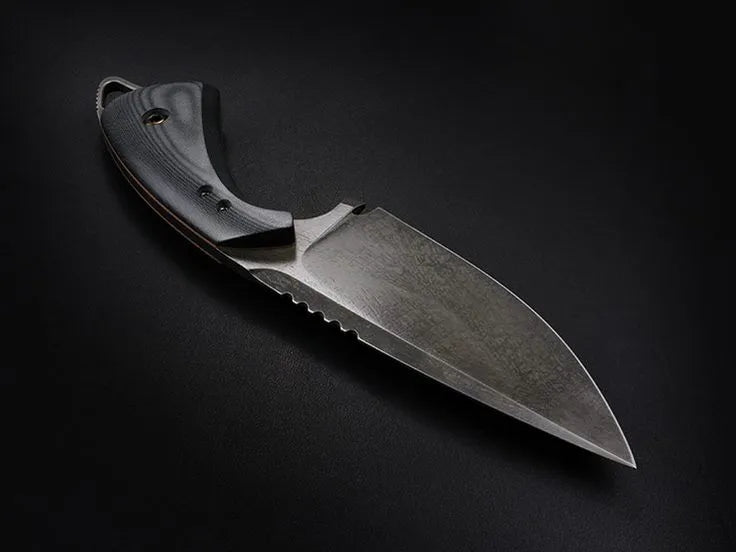
How to Make Damascus Steel Axe?
How to make a Damascus Steel Axe? One can make a Damascus steel axe if one possesses basic knowledge related to metallurgy and a command of the different processes involved in making a metal alloy and further refining it. Creating a Damascus steel axe requires some expertise; however, the same techniques may be applied when creating other types of axes, like a Viking Axe, which is historically significant and known for its durability. This whole process of making a Damascus steel axe demands expertise along with complete paraphernalia for metallurgical processes.
History of Damascus Steel:-
Some historians believe Damascus steel was initially produced in India. Alloy metal, when prepared, is taken out from a kiln in large pieces of different shapes. These pieces are called ingots in technical terms. Some historians are of the view that steel tahat was produced in India went to Syria in the form of Ingots for sword and knife production. Thus, swords and knives produced from this steel were named Damascus steel products.
A General View of Damascus Steel
Damascus steel is a hard and flexible steel. It is an ideal steel for knives and axes. All knives, axes, and hatchets made of this steel outclass all related products of other steels.
1. What is Damascus Steel:-
Damascus steel is a high-carbon steel having 2 to 3 percent carbon content.
2. Ingredients in Damascus Steel:-
Generally, two alloys are heated together: high-carbon steel and nickel steel.
3. Phenotype of Damascus Steel
Damascus steel has a wavy pattern on its surface. This wavy pattern sometimes appears stark and sometimes light. A mosaic appearance also catches the eye. It appears in different wavy patterns.
Tools Required for Producing Damascus Steel Axe
How to make Damascus steel axe? Several tools are required to produce Damascus steel axe.
Damascus Steel Axe:-
Damascus steel axe consists of mainly two parts: one is the head, and the other is the handle.
The following tools are required to produce a Damascus steel axe.
- Welding tools
- Anvil
- Forge
- Tongs
- Vise
- Tempering Oven
- Drill press
- Hammer
How to produce Damascus steel axe?
The following steps are involved in producing the Damascus axe:
- Streamline and gather tools
- Assembling of Billets
- Heating
- Tempering
- Finishing
Commentary
The Damascus Steel Axe can be produced by combining billets of different steels with standard sizes. First, we weld the billets. Second, we heat the billets. After heating, we hammer and forge these billets and make the axe's head. Finishing this axe is the last activity to get an axe. This blacksmith technique is highly technical and requires a high level of skill and practice to forge different layers of steel.
Why Damascus Steel?
Why is Damascus steel used in making knives and axes? The answer is the following distinctive qualities of Damascus steel.
- Beauty
- Flexibility
- Strong
- Resistant
1. Beauty
The beauty of this steel lies in its wavy patterns, which are developed by pale and shadowy grains. Forged layers make this steel more resilient.
2. Flexibility
Damascus steel is very flexible, as the stock of layers is heated and hammered at controlled temperatures following comprehensive time—and agent-based cooling methods.
3. Strong
Damascus steel is considered a highly compatible steel. Its strong impact as a tool enables it to have a high degree of steel.
4. Resistant
Durability is another excellent feature of Damascus steel. It is resistant to damage and degradation. It does not erode quickly.
Layers in Damascus Steel
Damascus steel is produced by layering different steels. A common question regarding this is how many layers are required for the forged Damascus steel to be fit for making knives and axes. The answer is that about 300 to 500 layers are enough to produce a good-quality steel required for knives.
Summing Up
How to make Damascus Steel Axe? Damascus steel is produced by applying a series of procedures to different steels. The Damascus steel axe-making process is purely a high-level blacksmith feat. Forging, tempering, heating, and other steps ultimately yield a high-quality, durable, and flexible Damascus steel axe. Knives Hives offers a complete range of Damascus steel axes from its House fo Damascus steel.








